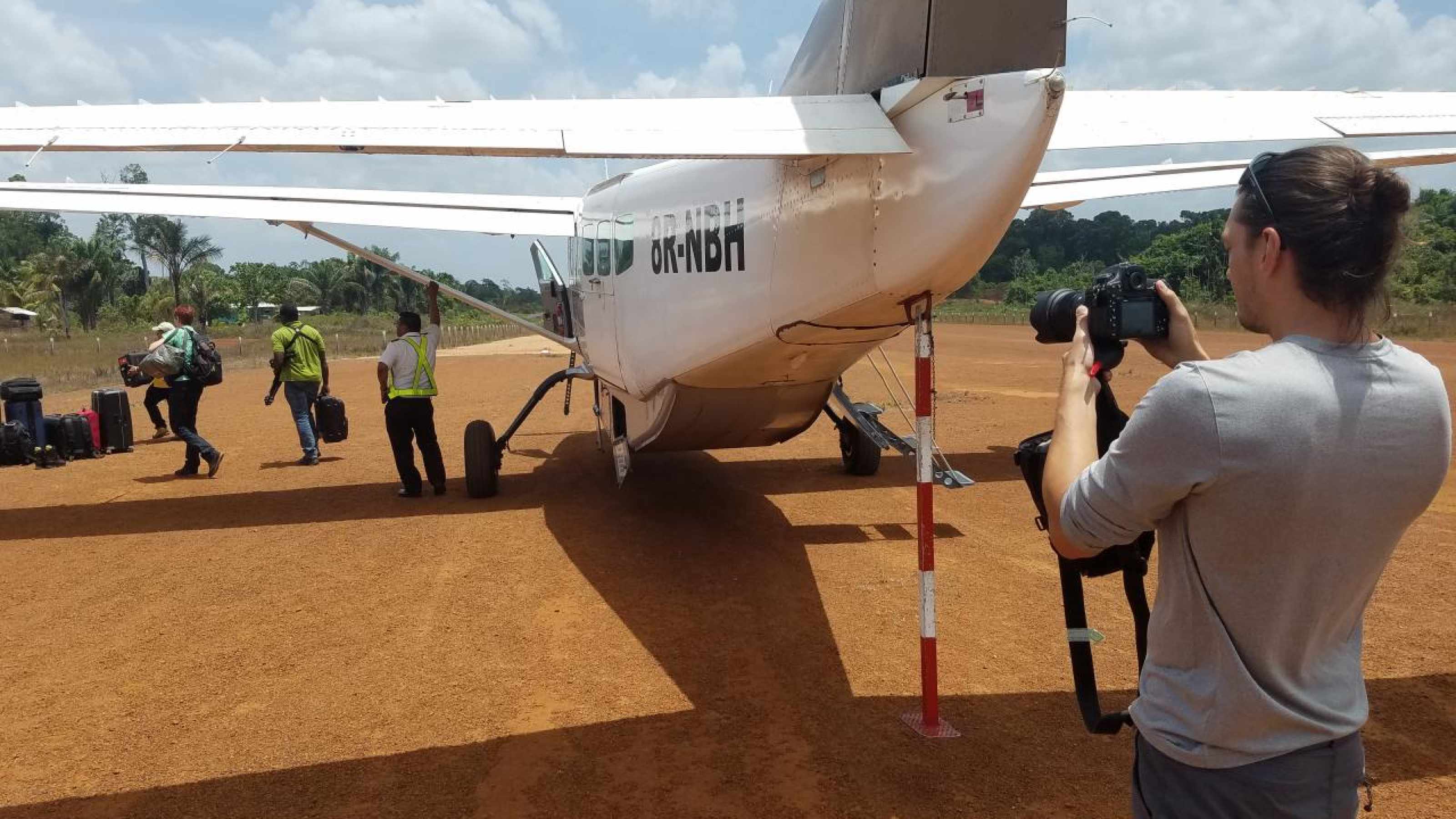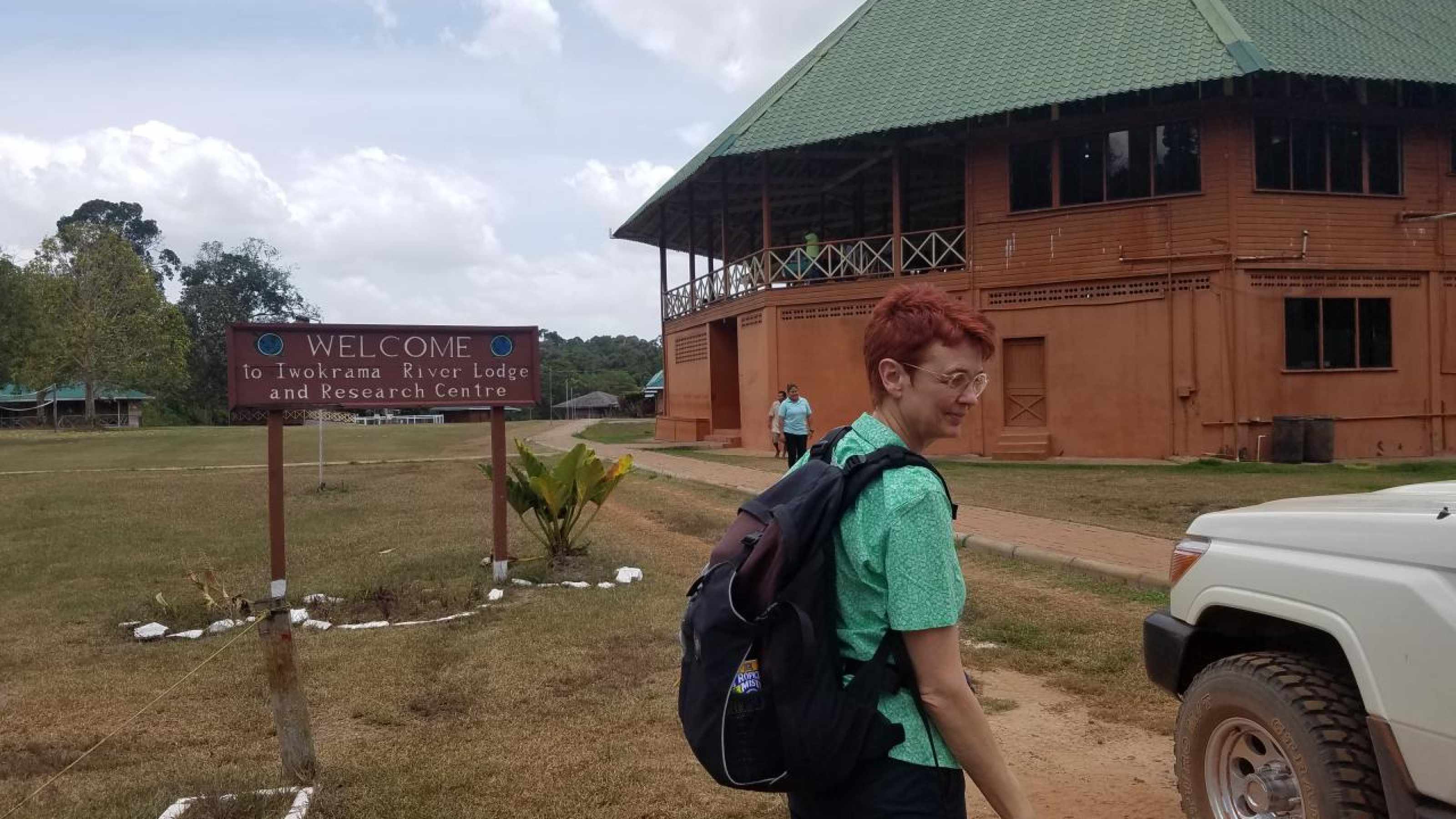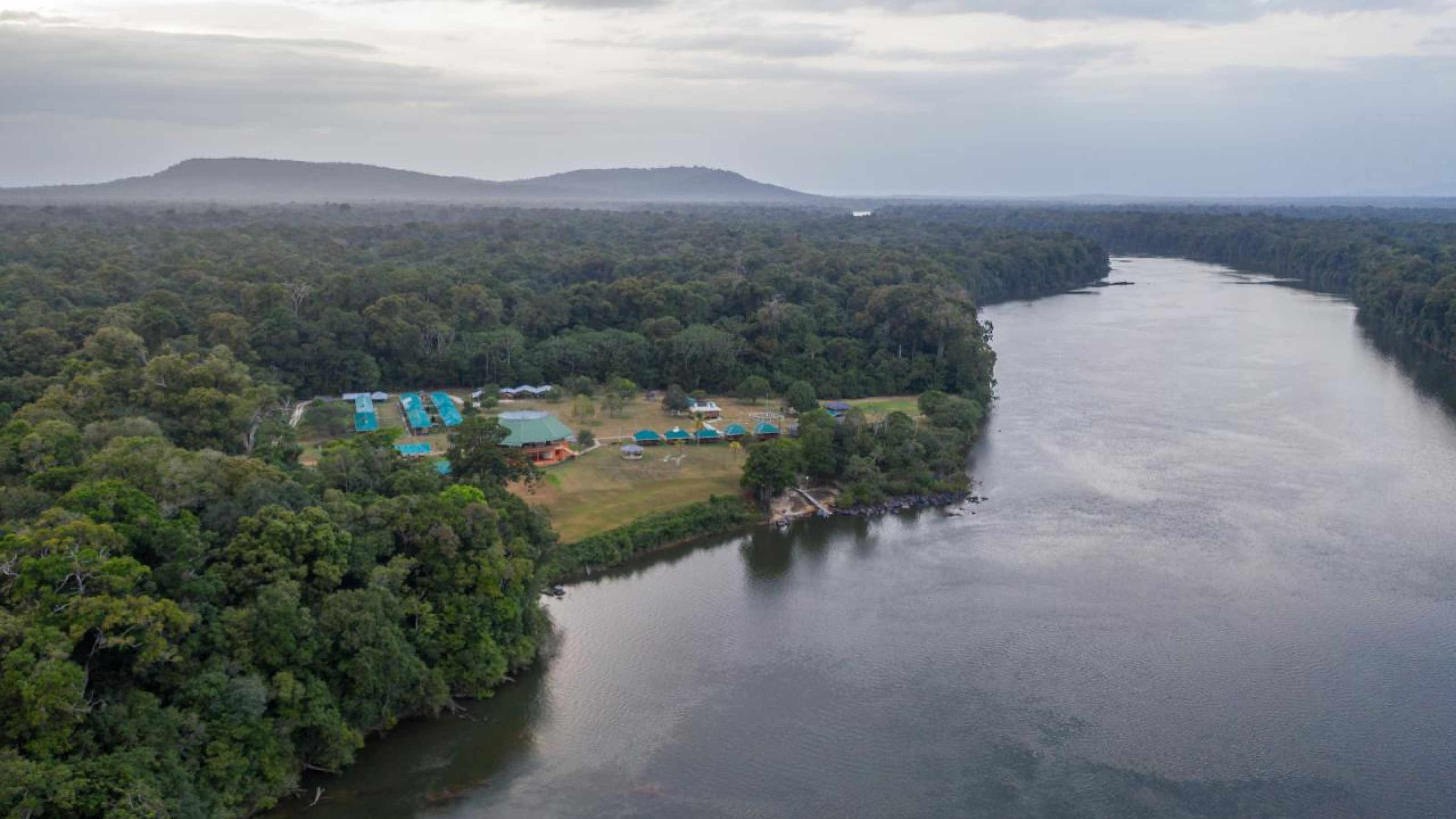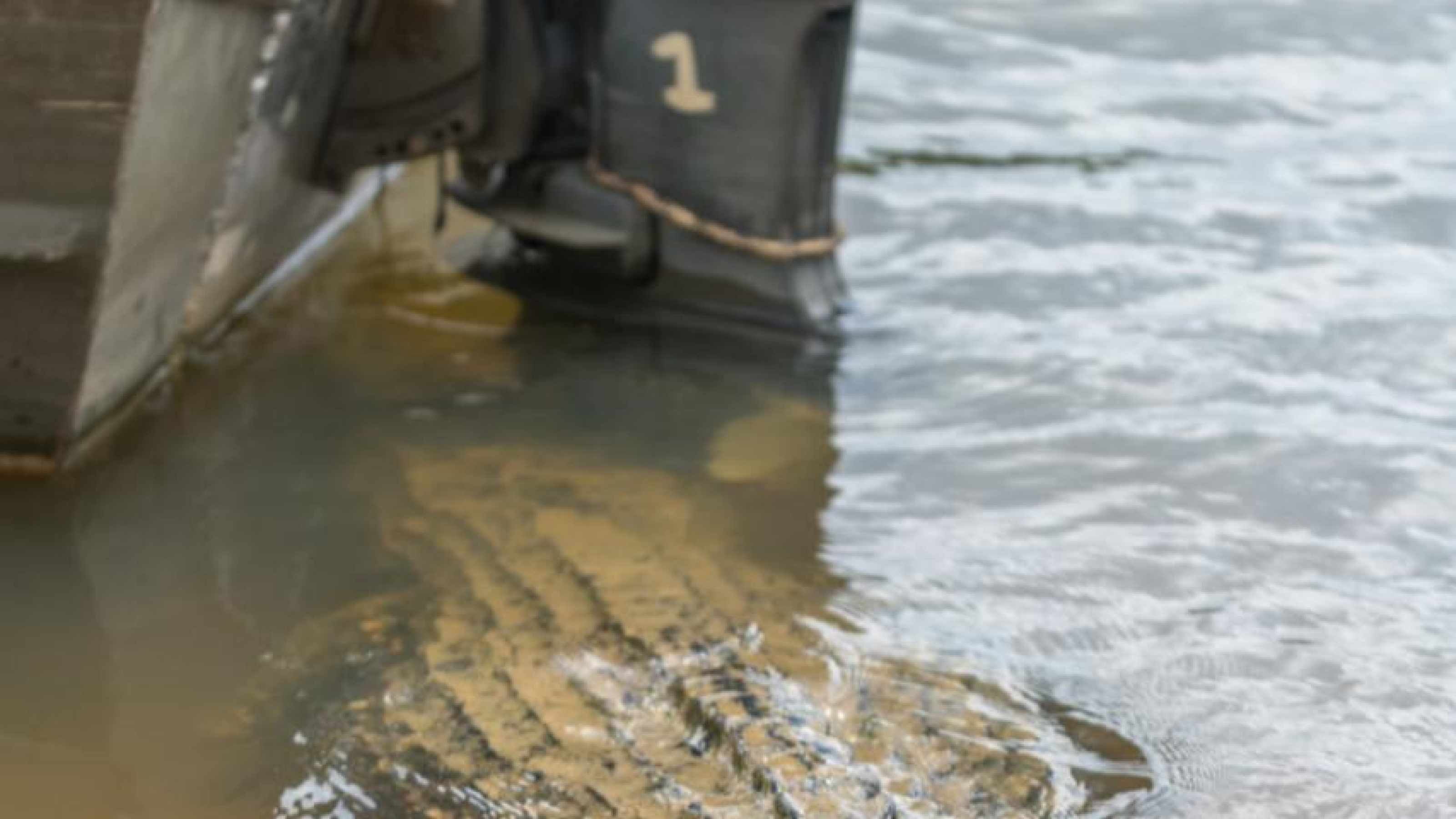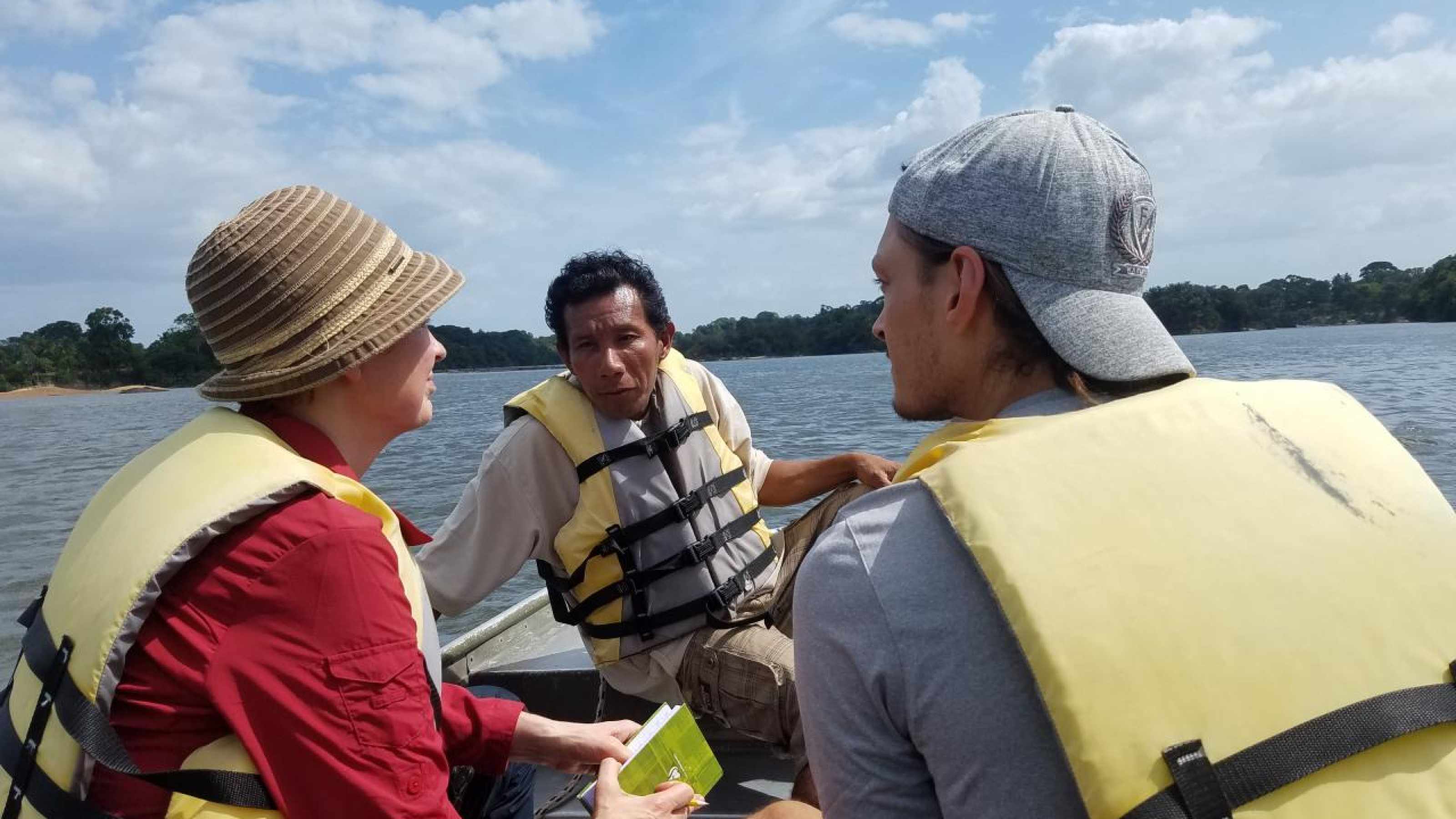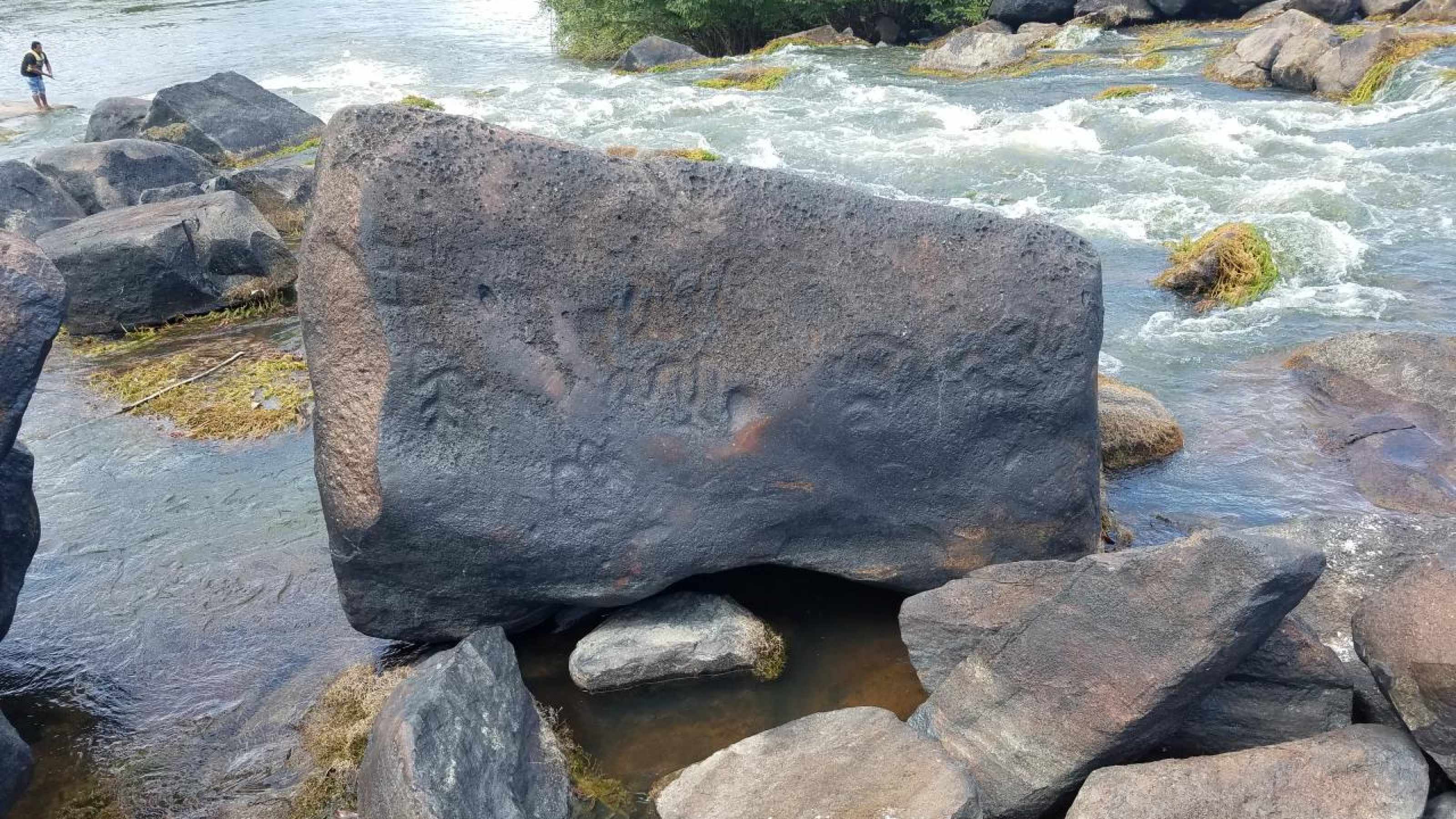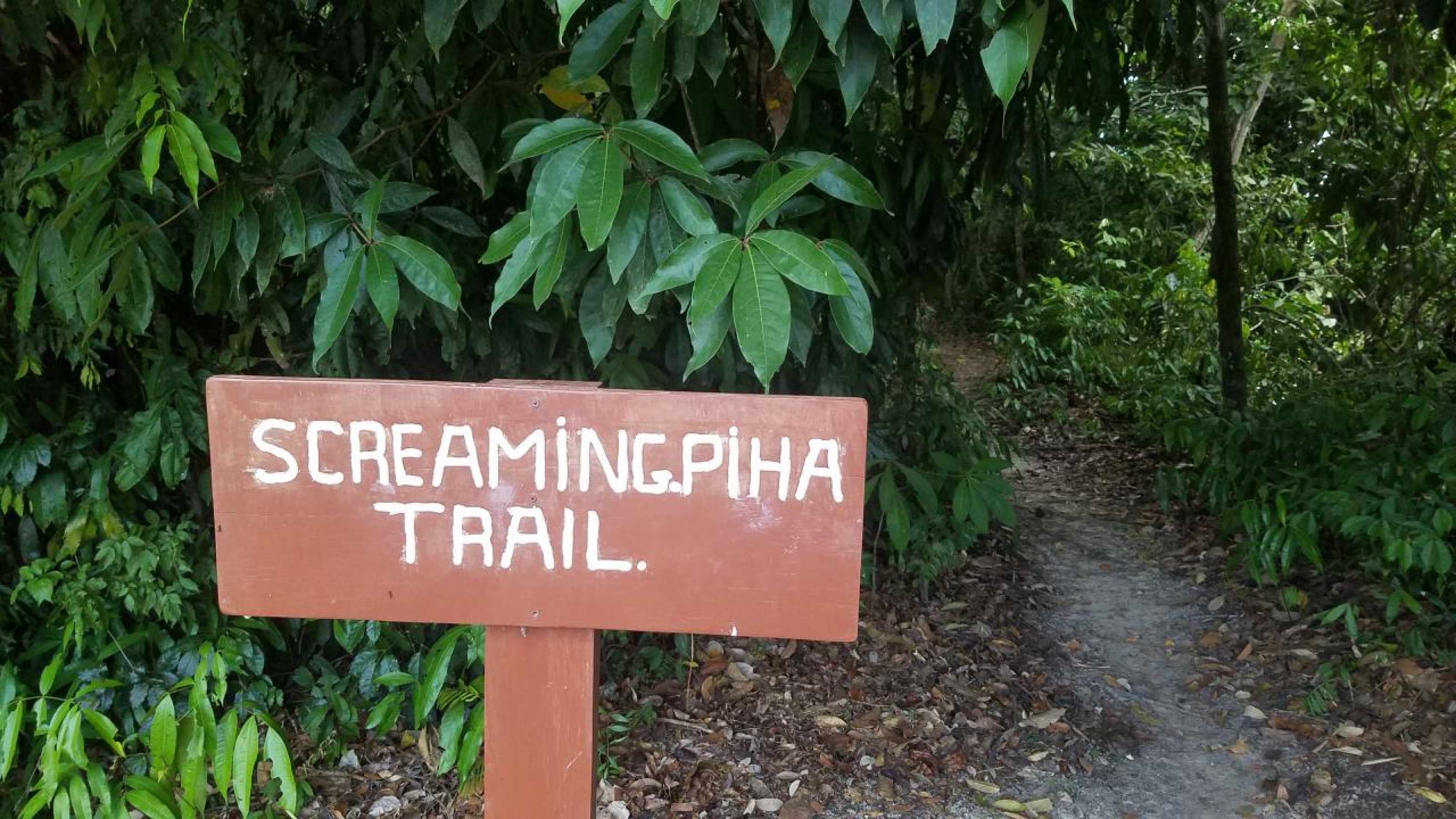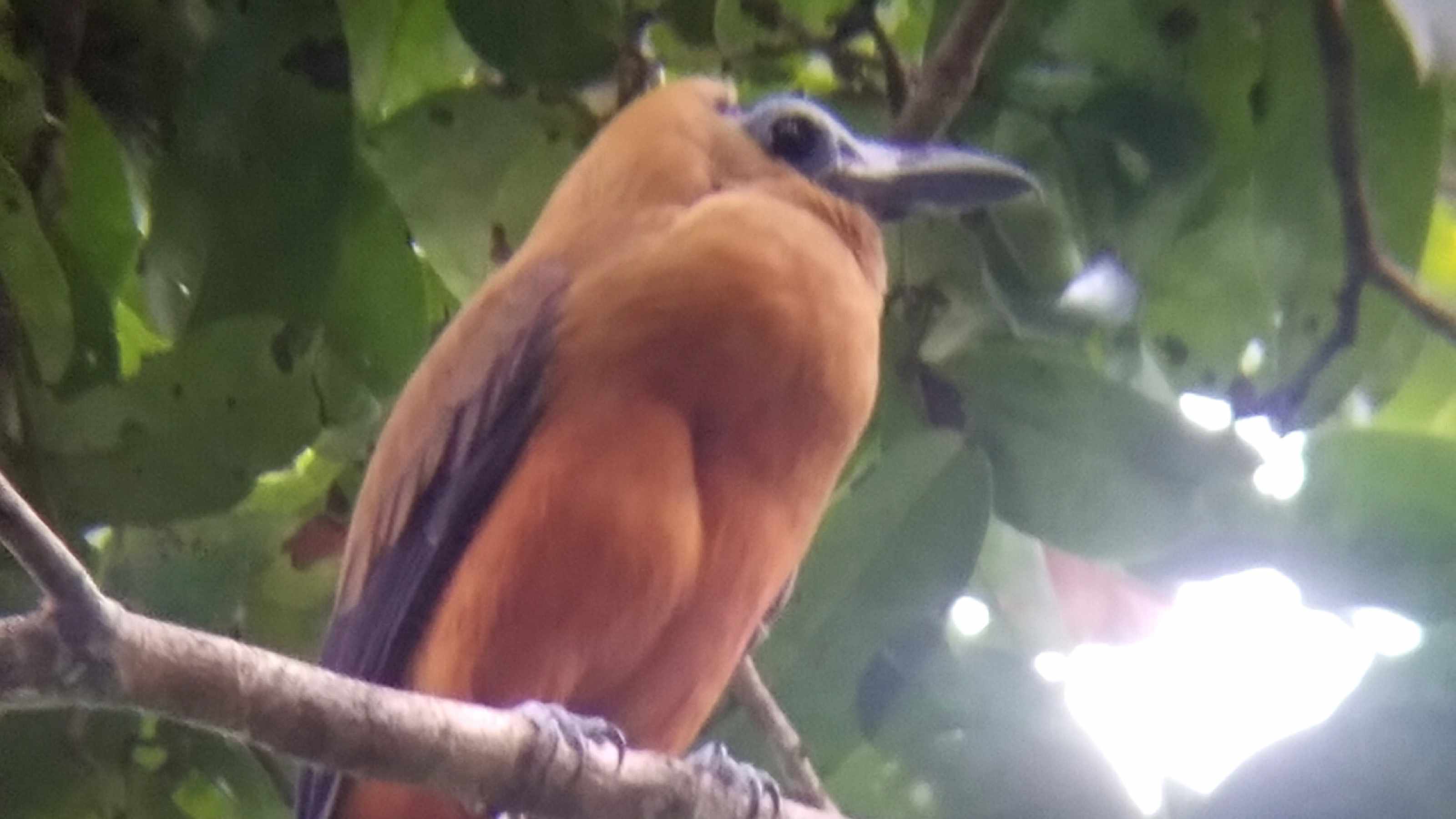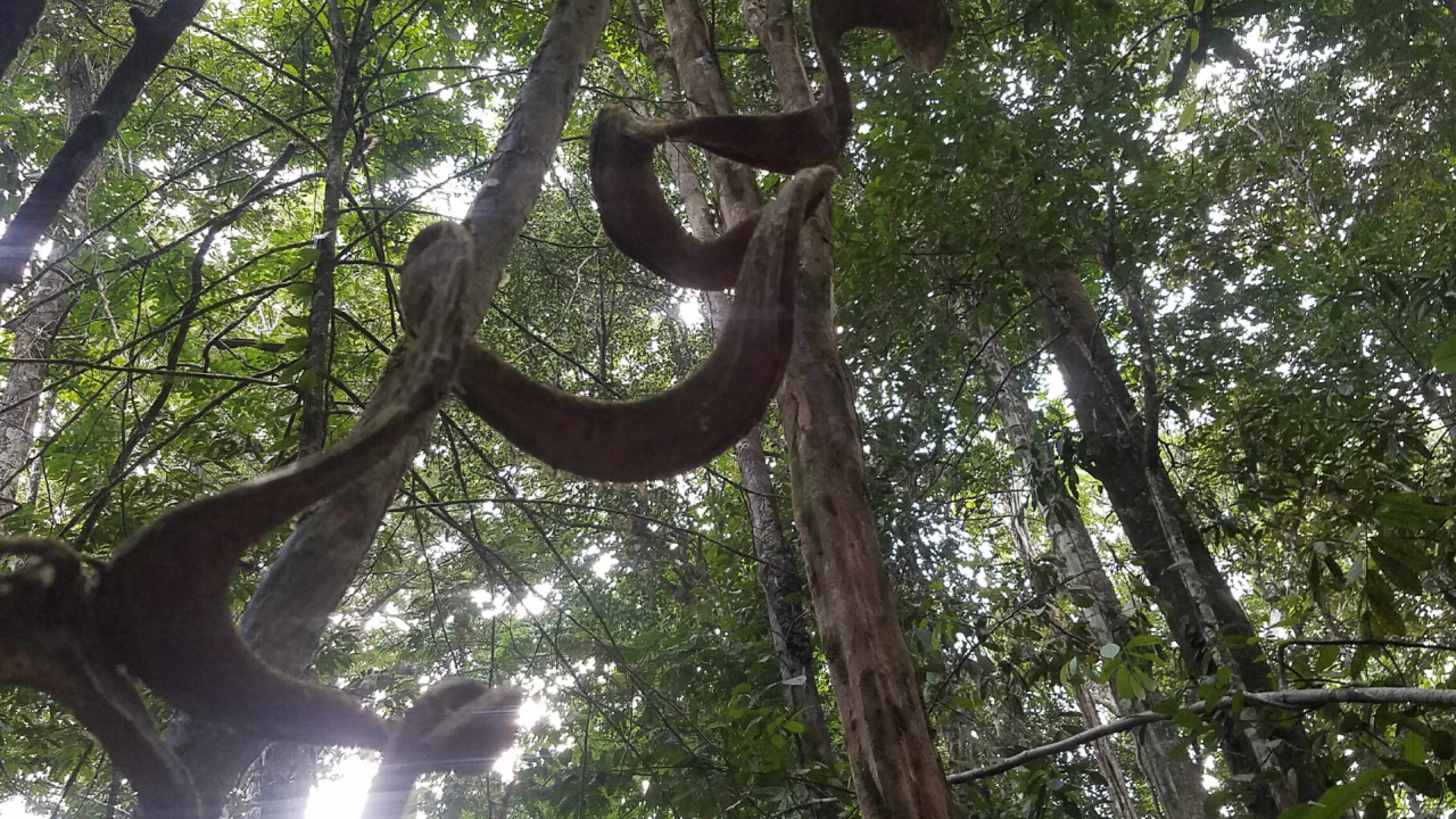We have some careful packing to do, because we’re on the road for the following four days in Guyana’s interior. Virtually untouched rainforest makes up about 80% of the country’s surface and at the moment it is still regarded as a carbon sink, can offer intact structures for specific species, provides an ‘El Dorado’ for bird lovers and is not without good reason seen as an insider tip. We’re interested in finding out more about the country’s natural treasures, how the rainforest and savannah population live and what effect climate change has here.
The four of us climb into the small propeller aircraft to Iwokrama and land a good two hours later. It’s incredibly hot on the airfield, but luckily we only need a few minutes with the car to a clearing at the River Essequibo and the various wooden houses of the eco-lodge. In the middle stands the central round building, from where we have a wonderful view of the river, which is almost 200 metres wide at this particular point.
We are taken by a small boat with a rattling outboard engine to the Kurukukari rapids. As we get on board, Shankar a black caiman and a pet of sorts, stares at us, while floating in the river and amicably observing the hustle and bustle of humanity. Our indigenous sharp-eyed guide Laurence will be presenting and explaining flora and fauna over the next 24 hours. The rapids boast over 6000-year-old rock carvings, witnesses of a period which is no longer understood today. Laurence tells us this is where houses on stilts have been built by the Makushi-Indios. And where bathing and washing is done. Unfortunately, plastic and waste repeatedly has to be collected here.
Fascinating bird life
There’s a white-throated toucan overhead, we catch sight of the large, magnificently-coloured macaws, these here are blue and yellow. Luke demonstrates his extensive knowledge of birds and not only has all names on hand and can explain their behaviour, but has brought a large pair of binoculars plus stative for closer viewing. Black vultures circle in the air, but above all we enjoy the unusually fascinating atmosphere in the middle of the rainforest.
After returning, we are immediately called to the edge of the forest, where red howler monkeys swing around the lodge. We do in fact glimpse one of them, a rare thing to happen, because normally they disappear very quickly. It’s much easier to hear them - their yelling makes a hell of a racket.
Now it’s time for a walk into the thicket: we enter the Bushmaster Trail, named after a highly poisonous viper, which now apparently no longer lives here. We hear a lowing call “Moo”, “Moo” – a bird the locals do in fact call a cowbird. It’s a capuchinbird and we see one. Just a few steps further and we hear another sound, this time a sequence of six tones: the speckled, but inconspicuous spotted antpitta, which sings at the top of its voice and which we can see with the binoculars. When we also discover the screaming piha, a kind of forest jay, which sends out a warning call, I find myself incredibly impressed by our day. Tom is always taking photos as we wander slowly and quietly along the path.

